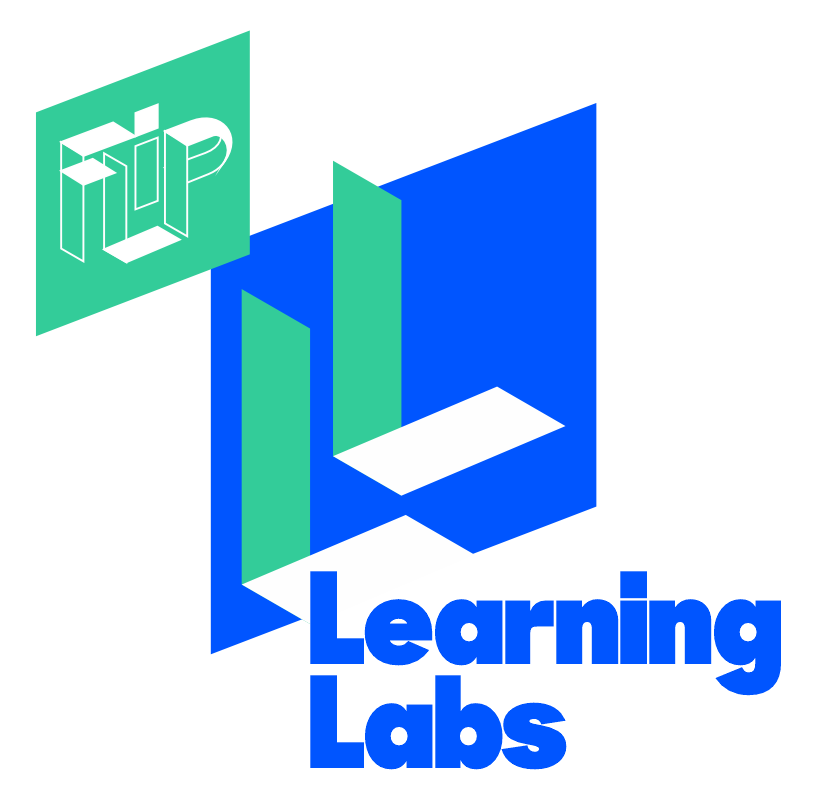Nowadays the city’s rich cultural heritage is carried on by initiatives such as Kentimiz İzmir Derneği, a non-profit organisation in the city of Izmir, devoted to protecting, developing and raising awareness of the city’s heritage. In the Konak district, home to Izmir’s oldest neighbourhood bazar, the Kemeralti, and a multi-cultural, largely middle class population, Kentimiz Izmir is running the ‘Kontak Innovative Learning Laboratory’ as a social enterprise and in a repurposed primary school building dating back to 1922.
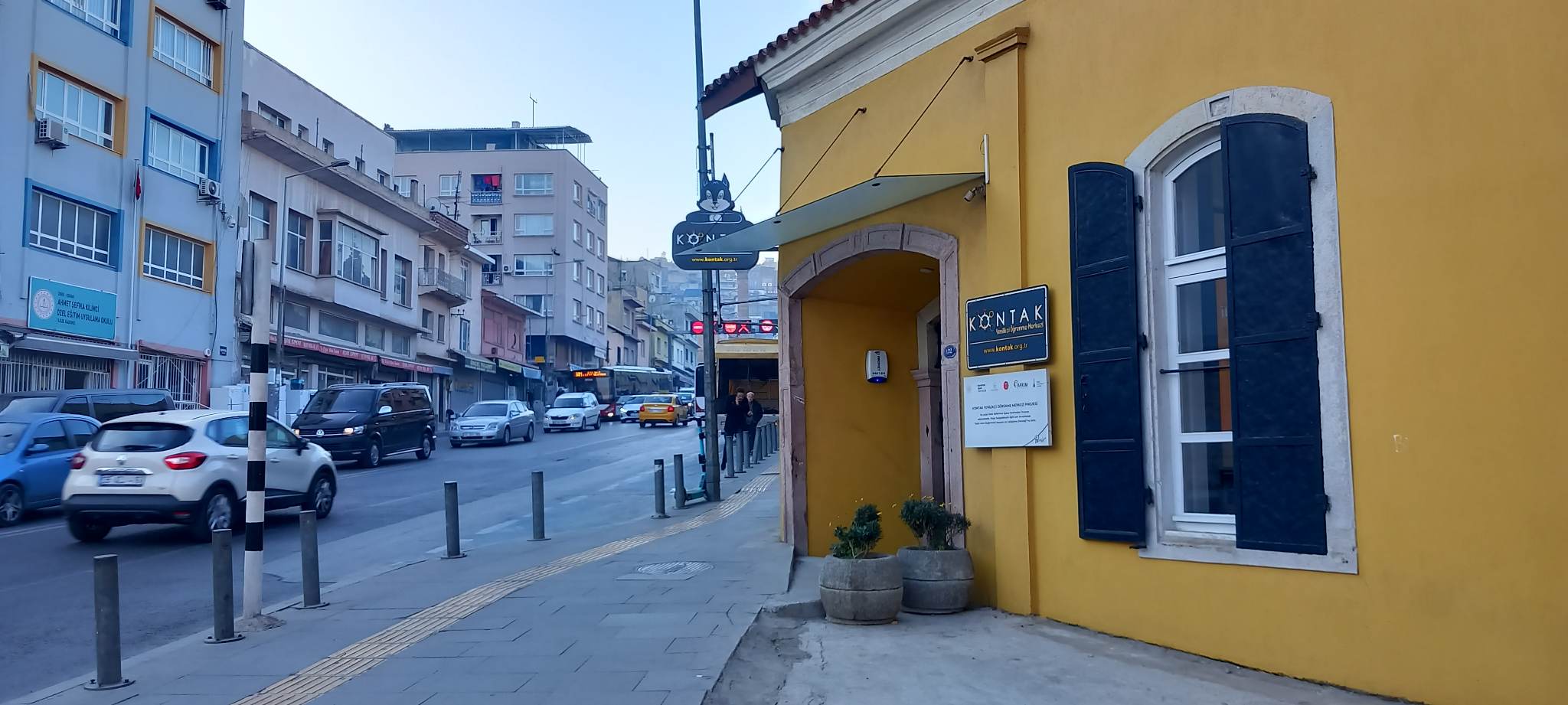
Izmir, January 2023. Today, students from the nearby public school are visiting KONTAK in the frame of Creative FLIP Learning Labs, bringing the building’s original purpose and atmosphere back to live.
Mentored by the team of Kentimiz Izmir Association comprising Sedef, Halis, Ece, Ibrahim, Sebnem and Ecenur, the young students are discovering existing cultural heritage at and around their primary school, making use of new technologies and techniques such as 3D printing and robotics.

Some background: Today in 2023, the participating students are learning at İsmetpaşa Primary School in Konak district in Izmir. Next to the basketball court where they spend their breaks and free time, one stands in front of the remains of a historic church and bell tower, dating back to the 1850’s.
Whilst the students know and see these historic grounds every day, they are not aware of its history, meaning and today’s importance. This also became clear when a first survey was conducted with the students to understand their level of awareness.
A few months into the project, students recognise and reproduce the historic building in all its details.
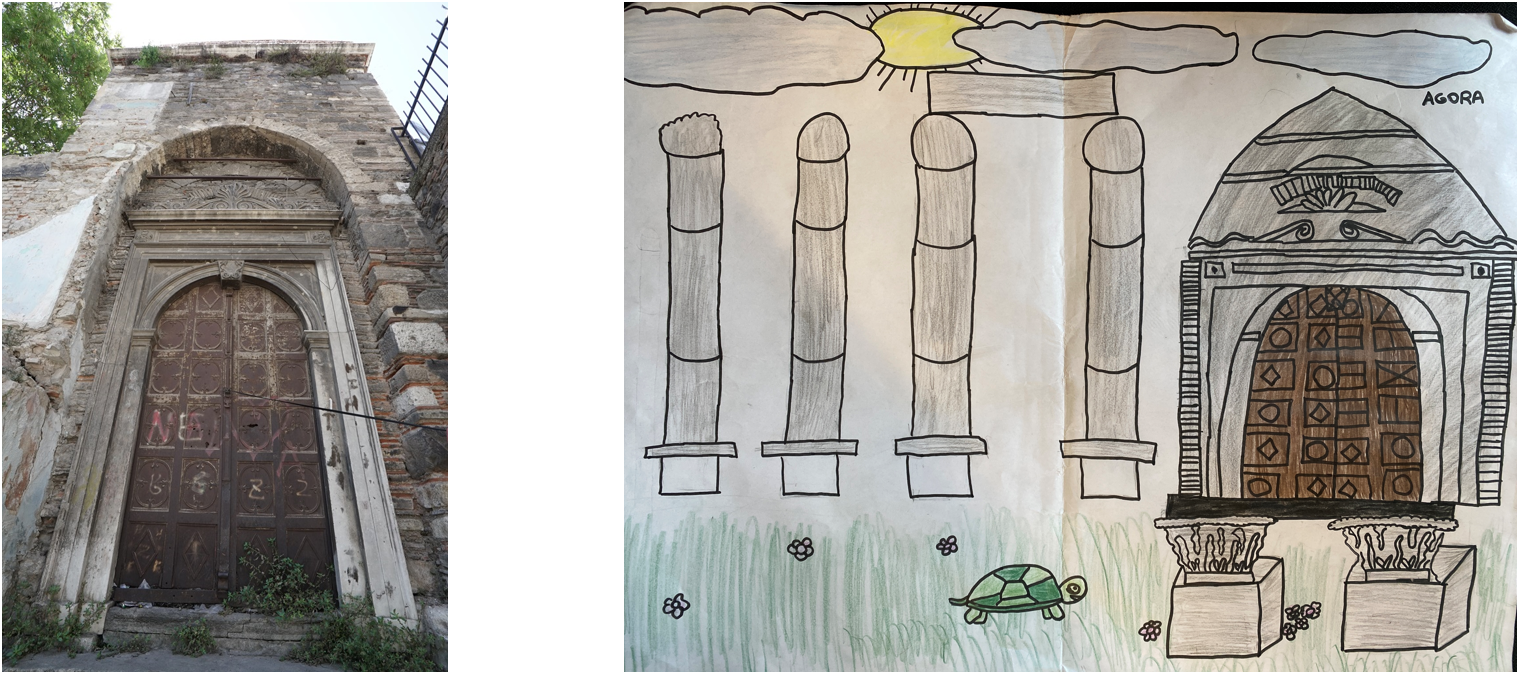
Staying true to their association’s goals, Kentimiz Izmir decided to use the old bell tower as a starting point for their Creative FLIP Learning Lab. Students learn about the historic place, conducting their own research and collecting images and facts that will later be shared with the rest of the school as well as parents and the local community. In parallel, they are learning about robotics, 3D design and 3D printing in order to build a model of the bell tower as it used to look.
Finally, they will be meeting several professionals to better understand the job profiles related to the activities they conducted, such as a historian, an archaeologist, a museum exhibit designer or 3D designer.
In January 2023 Creative FLIP team was able to visit, witness some of the activities and interview the team at Kentimiz İzmir Derneği.
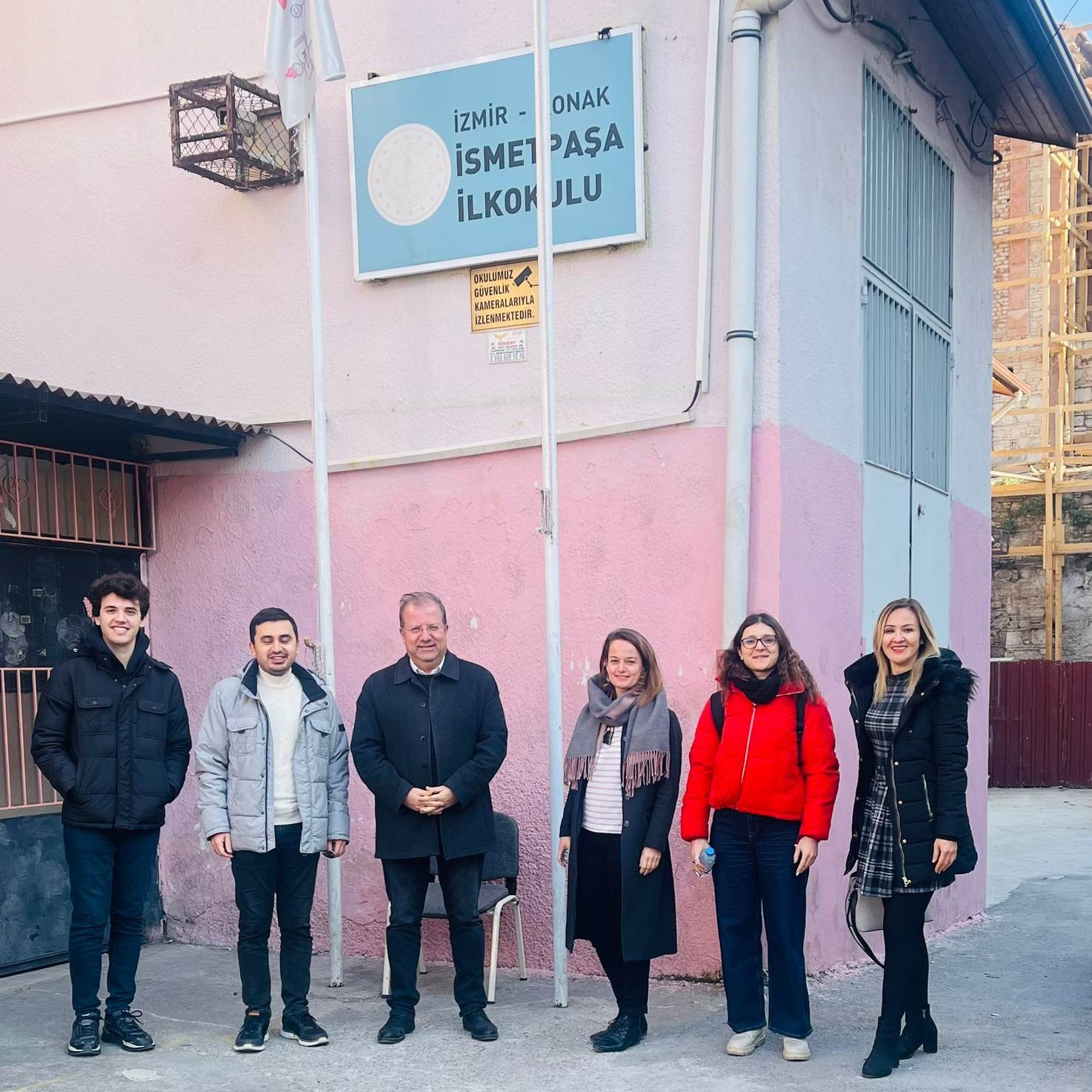
Why did you want to work specifically with this school and the historic bell tower?
“We are experienced in implementing projects that focus on historical places and archaeological sites. Kontak itself lays on the grounds of a 100-year-old historic school building, the İstiklal Primary School which was closed twice in its history. Both times, the students were moved to İsmetpaşa Primary School, about 500 meters away. Thanks to Creative FLIP Learning Labs we could start a project that revives this organic bond between the historic İstiklal School and todays İsmetpaşa Primary School.
Hands-on workshops with students are part of your daily work. Why is this workshop series as part of Creative FLIP Learning Labs different?
“Our workshop programs at Kontak last an average of 5 days. Through this project, we were able to work with the children on a more long-term basis and create a real community, including not only the children but their parents, teachers and the school director."
Did you also consider working with an older audience, such as high school students or those close to graduation?
“We focus on younger groups because they are our future and we believe that an early on investment in children will directly affect the future of the world. And only through education can change happen. Beyond this approach, we also wanted to work with this primary school in particular because it is a public school hosting many children with migrant background, deprived of the support that private schools or those in other neighbourhoods are able to offer."
In the case of your Learning Lab, all workshops re taking place at Kontak and outside of official school hours. Why did you choose this model for your LLab?
“This was a very conscious decision. We believe in quality non-formal learning outside the school which allows these children to enjoy the learning experience, without pressure or expectations from a teacher. We do not teach them, we mentor and guide them on an eye-to-eye level, making sure they gain confidence in their capability.
On another note, the school itself does not have the resources in equipment and material that we can offer at our Lab which is why we brought the students here.
However, and this is important, the closing event of the project will be held at the school itself, ensuring that the whole community can profit of the outcomes prepared by the children themselves."
You mention that you share a concern for the adequacy of formal educational systems preparing children for the future’s necessary skills. What are these skills?
“Our current educational system is built on memorization and standardization. We don’t want the students to memorize subjects for the sake of reciting them. We aim to guide them while demonstrating the practices of science to solve social and real-life problems. We like to call it experiential learning.
Robotics for example is an effective tool for improving 21 st century skills fostering creativity, collaboration and team-working, self-direction, communication skills and social responsibility."
Specifically in Turkey, where do you see potential of the further integration of transversal skills in regular school curricula?
“We see good practice examples of collaborations between associations or private initiatives and the Ministries of Education as well as Culture and Tourism. These collaborations can result in tools and materials developed by sector expert organisations and used by teachers. A good example is the private initiative “Komet Culture and Art Projects” which developed a Museum Kit aiming to develop students’ awareness for cultural heritage. In this context, a total of 500 teachers in Istanbul were initially trained to use the Kit during their lessons and statistics reveal that around 30.000 teachers are using the kit by now."
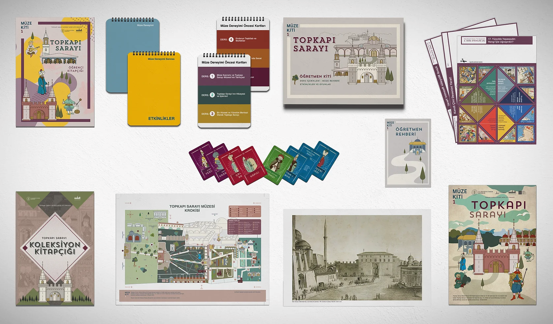
During your work on your Learning Lab, did you encounter any challenges or even systematic barriers?
“Specifically with regards to our Learning Lab and the way our educational system functions, we feel that children’s fundamental right to education is limited to “attending school”. But a child should also have access to “quality education” which in turn creates equal and inclusive learning opportunities for all children independently of their cultural, social and educational backgrounds. Innovative learning labs and the connection between learning and innovation are still a new concept in Turkey. We believe we should foster this trend and work on the harmonization and dissemination of this system, which meanwhile has become widespread in many other countries worldwide.
In a broader context of working with cultural heritage, the biggest barrier is that the topic is not a priority issue on a political level. Turkey still faces violations of women’s and children’s rights for example, and it is sometimes difficult to put cultural issues on the agenda of decision-makers.
While you have covered a wide range of topics and skills during your workshops with the students (robotics, 3D printing, design techniques, research and more), can you name one take away that you wish for the children?
“As they discover and learn new things, they are becoming more independent. And as they become more independent, they are beginning to take more pride in their accomplishments. Whether it’s learning a new concept, solving a tough problem on their own, or making a new friend, we would love for them to remember those big and small accomplishments!
And ultimately, at Kentimiz Izmir we believe that «a common heritage» encourages children to become active in local heritage and to share cultural experiences at local level."
Creative FLIP Learning Labs also aim to increase awareness of IPR protection within cultural practices. What was your impression of this new element to the labs?
“This concept was a completely new perspective for the children and has also become a new area for us to develop new skills ourselves as well. We made an effort to match the project activities with the concept of IP, designed a specific workshop and included many activities and examples that we had previously received by the Creative FLIP team.
Beyond your LLab workshops how have you benefitted of being part of Creative FLIP community?
“Since we became a beneficiary and member of Creative FLIP Project and community, we started to closely follow its activities and have also become involved in the big network of creative hubs. We have successfully applied to the Creative FLIP TwinHubs Program which will help increase our own hub’s capacity through skills development and exchange and the establishment of international partnerships."
By Wanda Poitschke
Read more about
Creative FLIP Learning Labs
Kentimiz İzmir Association
Kontak
Komet Culture and Art Projects Museum Kit
Creative FLIP Project | Shaping the world around us
Creative FLIP Learning Labs is visiting Creative Spark, a local creative hub and co- working space in Ireland.
At St Mary’s College in Dundalk, Ireland, students are being encouraged to find motivation and thrive through creativity. In Ireland, before heading to University or specialised schools to enter the working world, students may choose to do a Transition Year (TY). During this time they develop personal responsibility and maturity, gain practical experience and make more informed decisions. Part of TY is also the creation and prototyping of a small-scale business idea.

This is precisely where Creative FLIP Learning Labs and Creative Spark, a local creative hub and co- working space, come into play. The newly opened FabLab and Print Studio usually cater for workshops with people of all ages as well as creative professionals, using the premises for their own creations. For the first time, TY students of St Mary’s College are prototyping their product ideas at Creative Spark, mentored by the hub’s professional team comprising Oscar Diaz, Carl McAteer, Gráinne Murphy and of course the overall support of Creative Spark, represented by Sarah Daly, Founder and Executive Director.
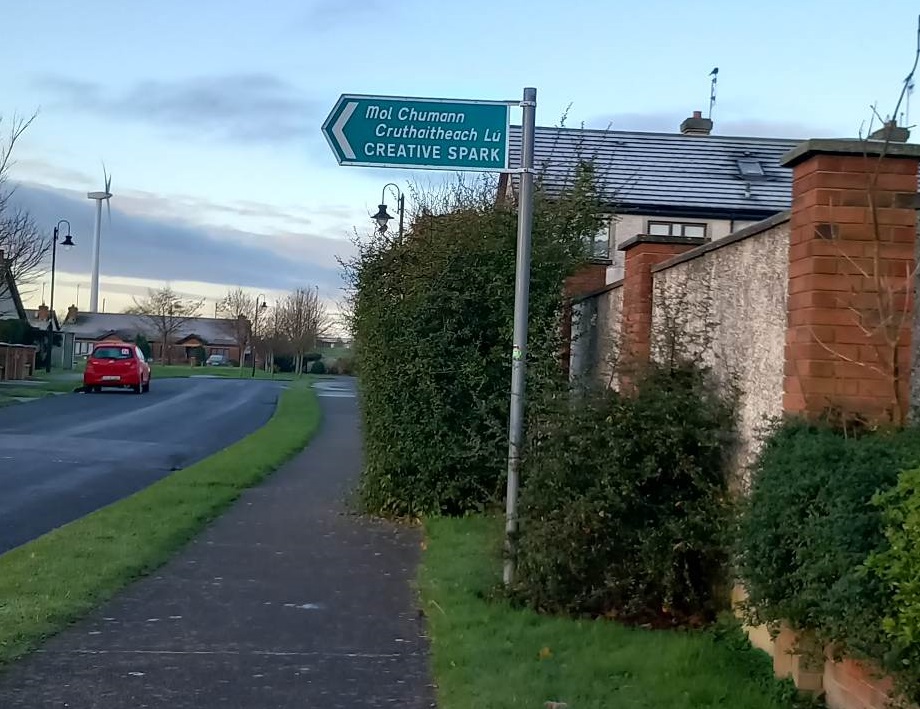
The team launched a call for participation among all TY students with over a hundred initially interested. The following exchanges and sessions resulted in 30 students being selected to participate in the experiment. Together with the school teacher in charge, Mr. Murphy, the group set their goal for this Learning Lab: Shaping the world around us, identifying real-life problems in the school environment and creating solutions with the help of design thinking, creative processes and technologies.


Soon six working groups had formed with product ideas ranging from jewellery making, textile design and AirPod innovation to a real upgrade of regular school lockers. Lastly, one group took on the challenge of documenting the entire process, creating a final video about their Learning Lab experience. When Creative FLIP came to visit in early December 2022, students were already well advanced in their projects, finalizing the first prototypes and they were very excited about presenting their innovations to us.
With their respective working groups Aedan and Isolde thought of a smarter way to use the large school lockers, maximizing their storage potential.

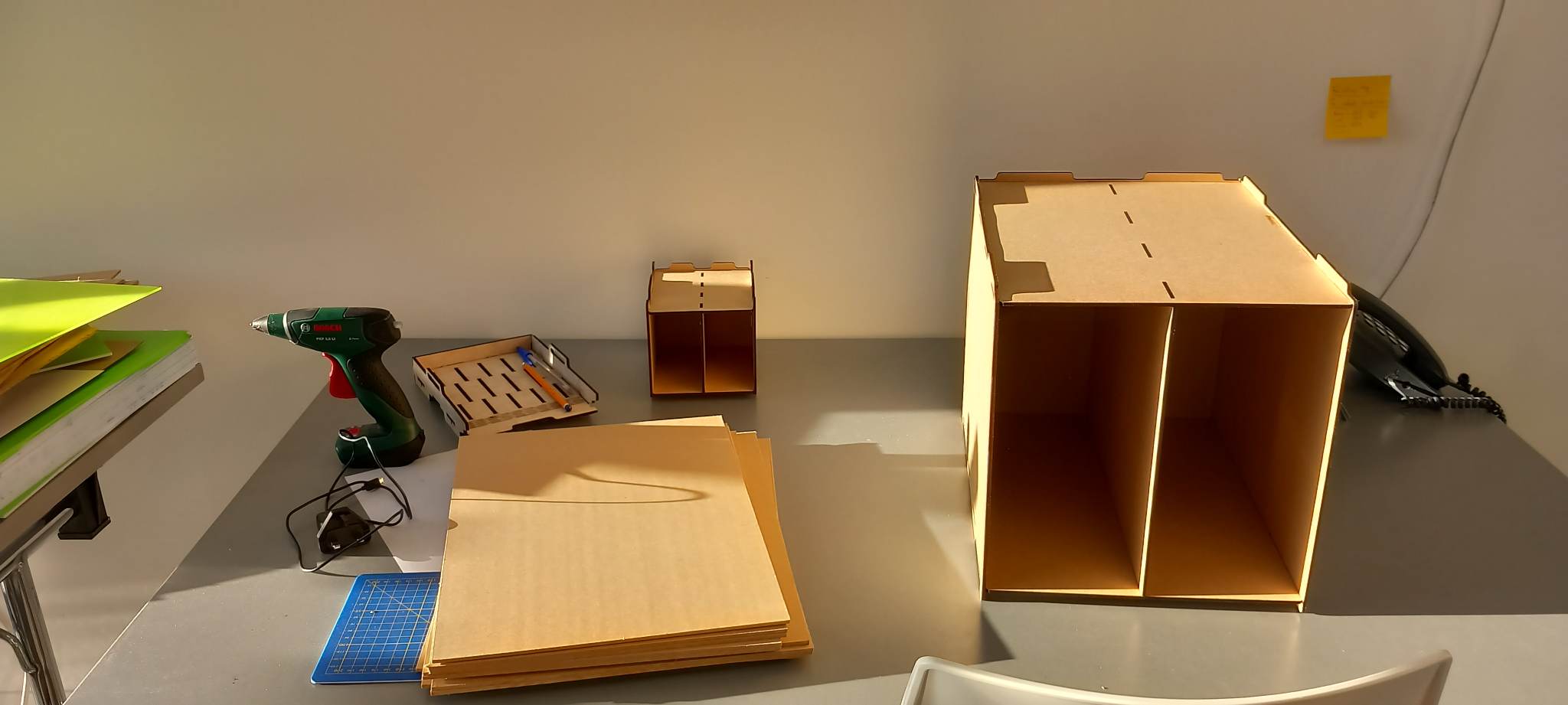
A simple but well-designed locker storage system and a magnetic wallet with clothes hangers, to be placed inside the lockers, will keep the currently messy school lockers nicely organized in the future. The main parts of both products have been produced with the help of a laser cutter and additional pieces were programmed and printed with the FabLab’s 3D printers.
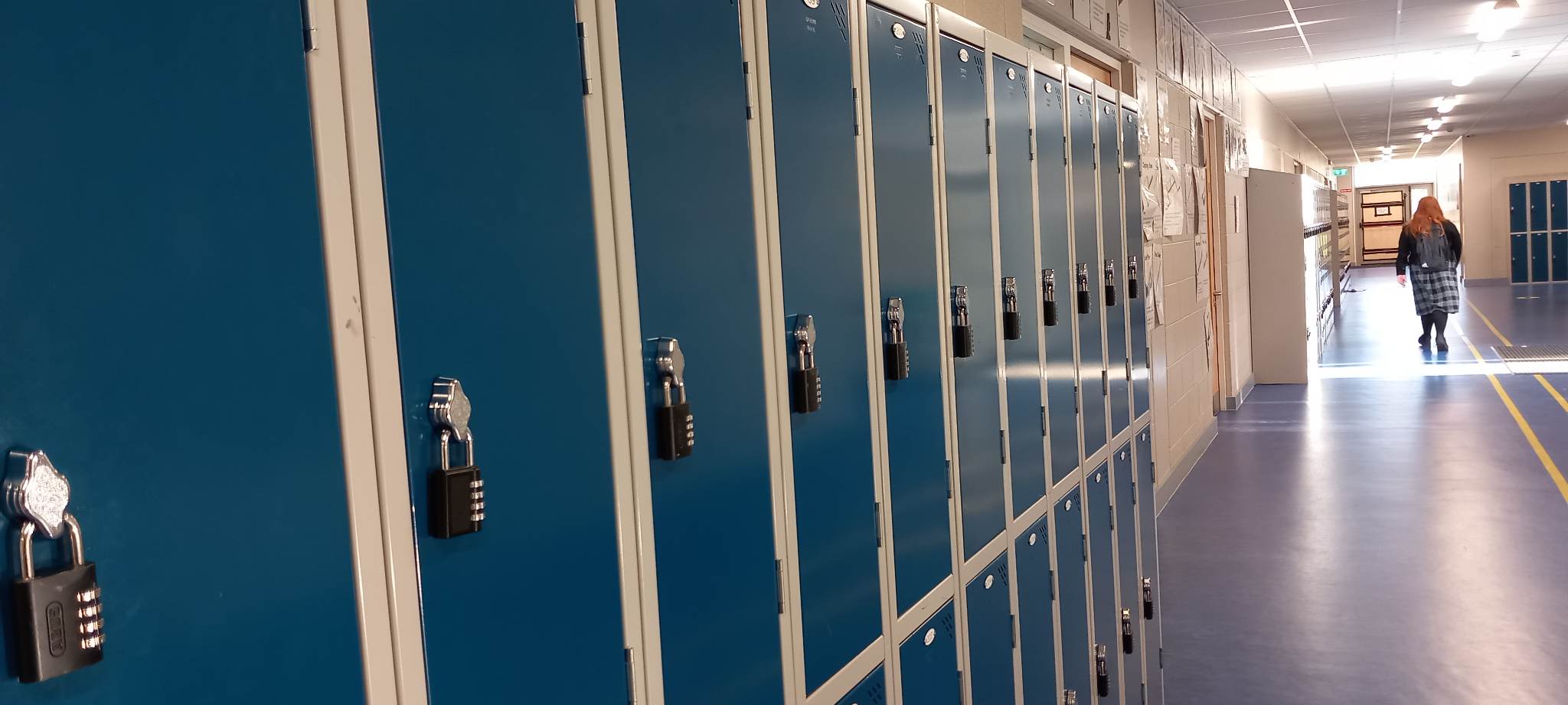
At the next table, Alex, Edvards, Andrew, Conn and Ronan are working hard on an AirPod cleaning system for their favourite music devices and the right tunes on their way to school. Sam and Eoin who are in charge of the video production had been very inspired by all this creativity in the room and decided that the video filming task wasn’t quite enough for them. Being real business minds, they produced pocket-size round wooden badges that can be used as keychains or promotional gifts by companies. With the help of the laser cutter, the company logo can be applied to the badge which uses Near Field Communication (NFC) to send the company’s website or other internet links directly to customers’ phones when holding it close to the badge. And the boys are taking this seriously, already approaching local business owners with their product.
Moving on to the upper floor at Creative Spark, we find Gráinne working with two groups of girls on their very own textile prints applied to t-shirts, pullovers and tote bags. A second group is recycling and working with pieces of coloured glass, washed up at the nearby beaches, assembling different jewellery. Soon these will be sold to other students, the school community and local businesses at the annual “trade fair” during which TY students present their mini-business ideas and product models.
After the students have left the FabLab, heading back to school for the afternoon, we found time for a chat with the Creative Spark team.
If students succeed to sell their ideas, they may be able to return to the FabLab at a later stage to produce the ordered items. FabLab Technical Manager Carl explains to us that 3D printing is a cost- effective way of prototyping and producing smaller quantities, without having to invest in heavy machinery for a professional large scale production. Perfect for these motivated, creative and business-driven students, our creative professionals of tomorrow. This also goes in line with Sarah’s vison for Creative Spark. As Founder and Executive Director she wishes for the hub to offer affordable work space for artists and creatives in County Louth, clustering creative enterprises and providing a fruitful environment to work with and learn from each other in order to accelerate or start their businesses. Another element which supports this philosophy are art residencies that are regularly organized by and at Creative Spark, with the printing and ceramics studio high in demand. The newly created Fab Lab with its 3D printers and laser cutters is a great addition to the space.
What is your motivation to directly collaborate with a local school?
“We do have regular art classes and workshops with youngsters and one off classes at primary schools. Creative FLIP Learning Labs Program, however, gives us the chance to implement a more long-term project with the same students returning regularly, all the way from project ideation to production. Such a project is always a process and each student works differently, some are very focused while others need more support and guidance. Group dynamics play an important role in succeeding in co-creation and it needs time to experience and reflect on its different stages. The school also helps us with the logistics, providing a bus to bring the students to the hub for their sessions. And lastly, we successfully integrated this Learning Lab in the weekly curricula which means students have proactively agreed to participate. They feel engaged and motivated to achieve the goals we set together.
Many of your preparative workshops within this program took place at the school. Why did you choose it as venue, rather than the FabLab?
“The school and our contact person there, Mr. Murphy, have been extremely enthusiastic about the Learning Labs. Starting in a comfortable and known environment created a productive atmosphere based on trust. We also thought it important for our collaboration, to get to know the school’s premises and students’ learning environment as it is the starting point for this project. The goal is to create solutions for real-life problems in students’ daily lives. Additionally and with the help of Mr Murphy, our activities were designed to be complementary to existing classes such as Technology class taking place at the well-equipped classrooms at school.
Are there any systematic barriers and challenges you encountered while designing your Learning Lab?
“In our case, the collaboration went smoothly with no major problems. In general however, this depends very much on the school staff’s flexibility and willingness to cooperate. The lack of funds in public schools can also play a role and a general tendency of “separating” classes and topics, rather than using a multi-disciplinary approach for teaching. In our view, Transition Year is a very useful tool to provide students with that extra time and space to develop and explore future career paths. We found it particularly enriching to work with TY students having the time to guide them towards the realization of their own ideas and projects.
Are there any memorable moments throughout the project that you’d like to share?
“It was rewarding to see the diversity in students and how each of them found their role within the team. One boy on the “wallet-making group” was quite uninterested in the beginning, it was hard to get him motivated. But once he could feel his ideas were taken into account and the product took form, he became very engaged and proud of being part of that team. He took matters in his hands when the group needed a lead and stepped up for all of them.
Generally this has been a very positive experience and we are already replicating the program with another group of students, outside of their usual curricula. We are curious to see each of them develop along the way and ultimately succeed in achieving their personal goals.
By Wanda Poitschke
Read more about
Creative FLIP Learning Labs
Creative Spark
Creative Spark Arts Residencies
Key Takeaways
Creative FLIP
Learning Labs are joint cooperation projects between cultural and creative organisations & schools, initiated by the Goethe-Institut Brussels in cooperation with ECHN, funded by Creative FLIP project.
